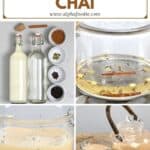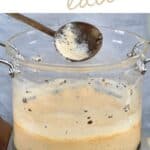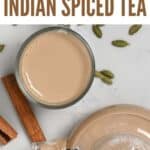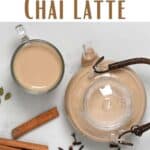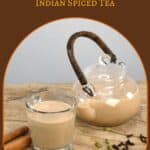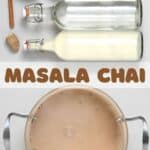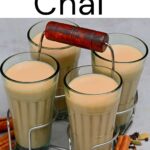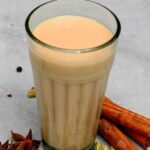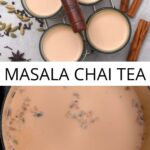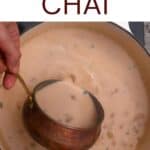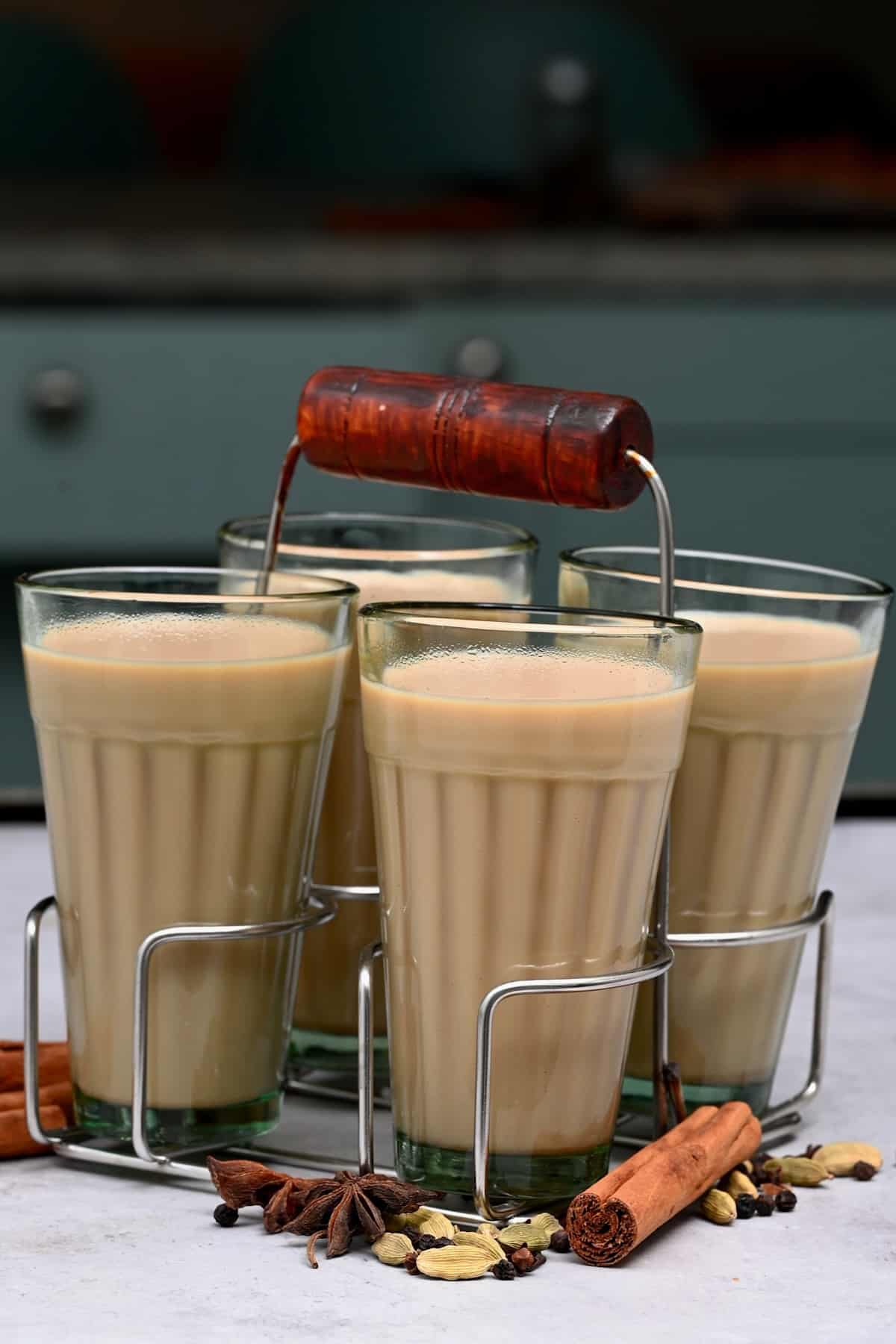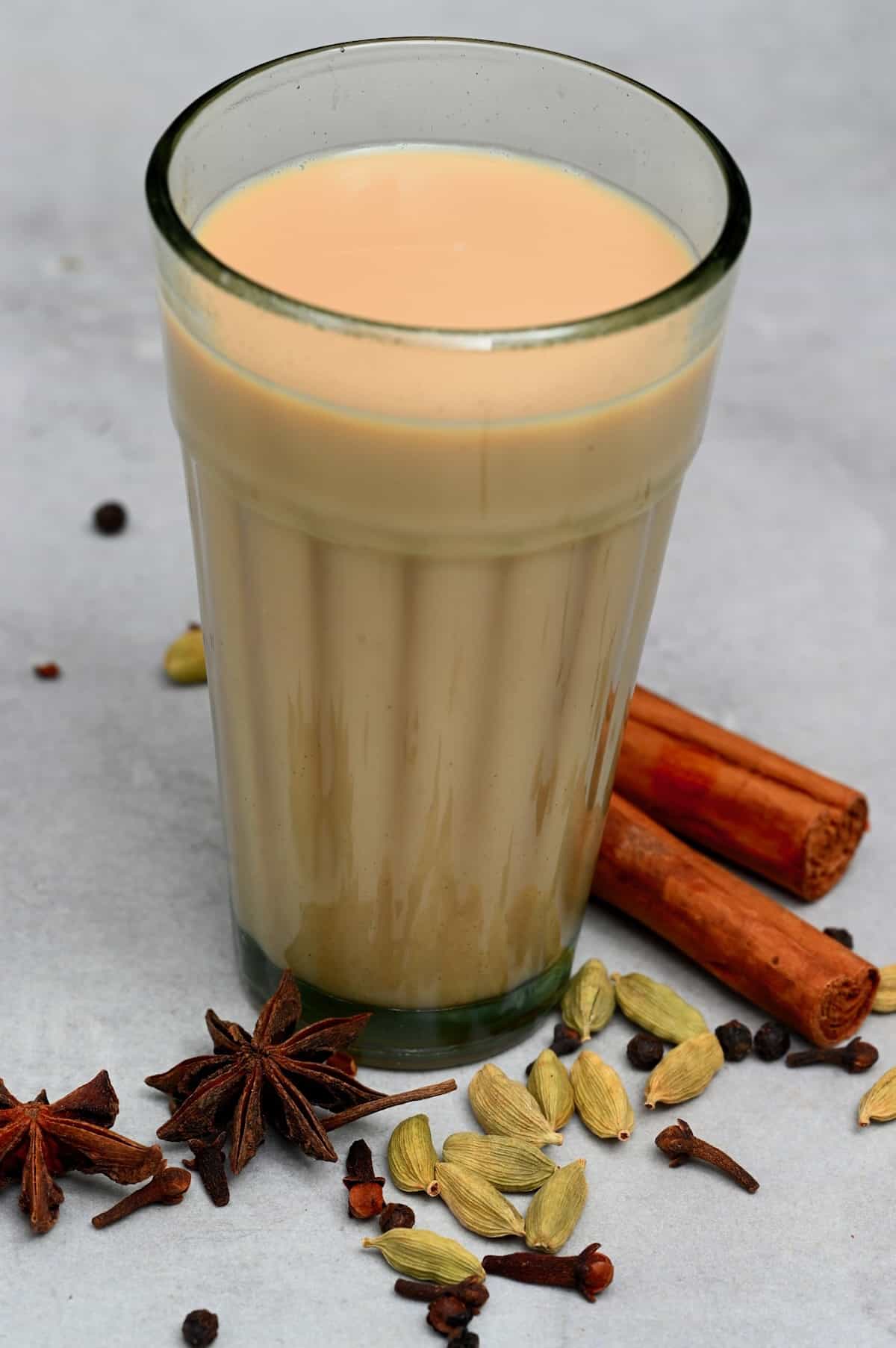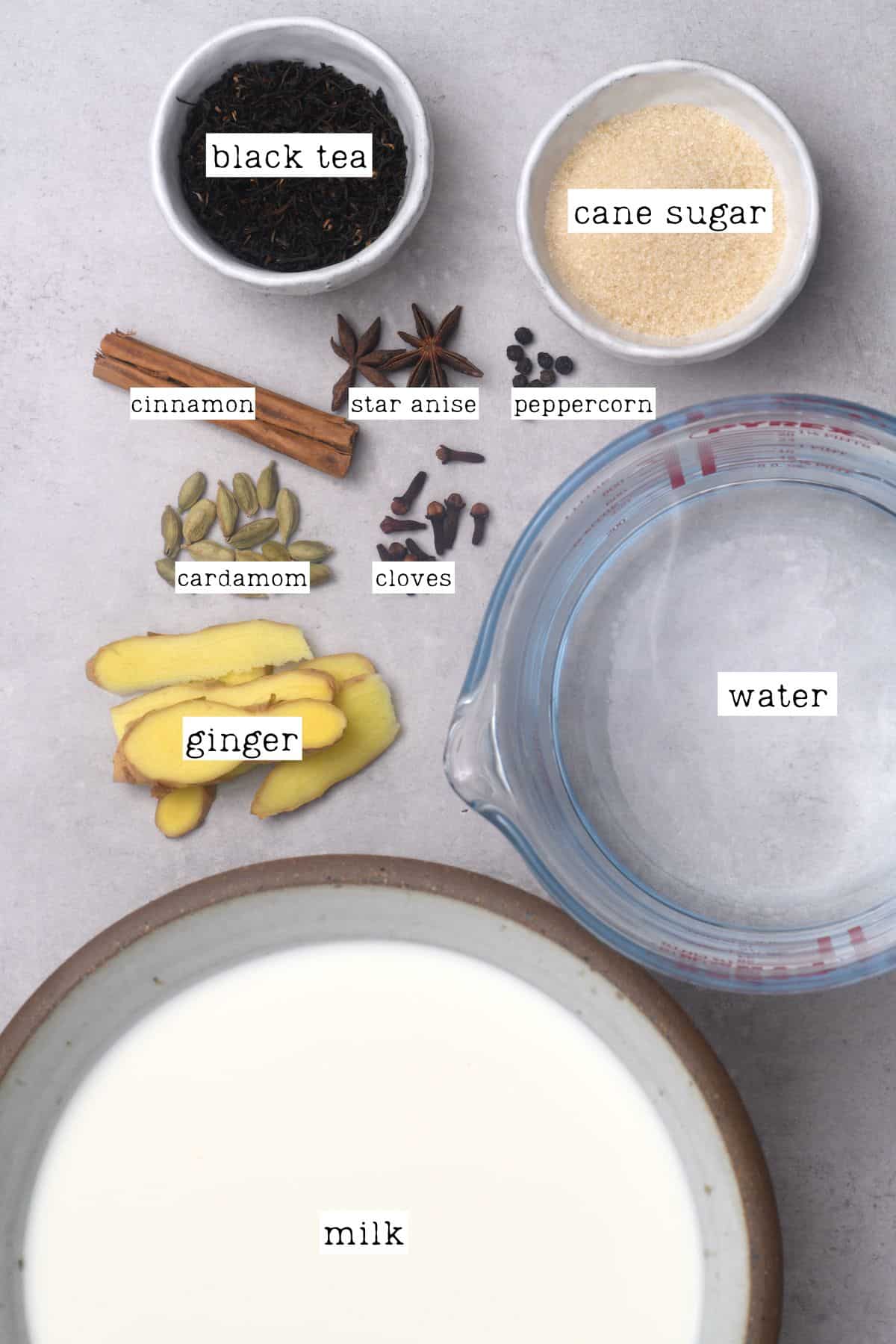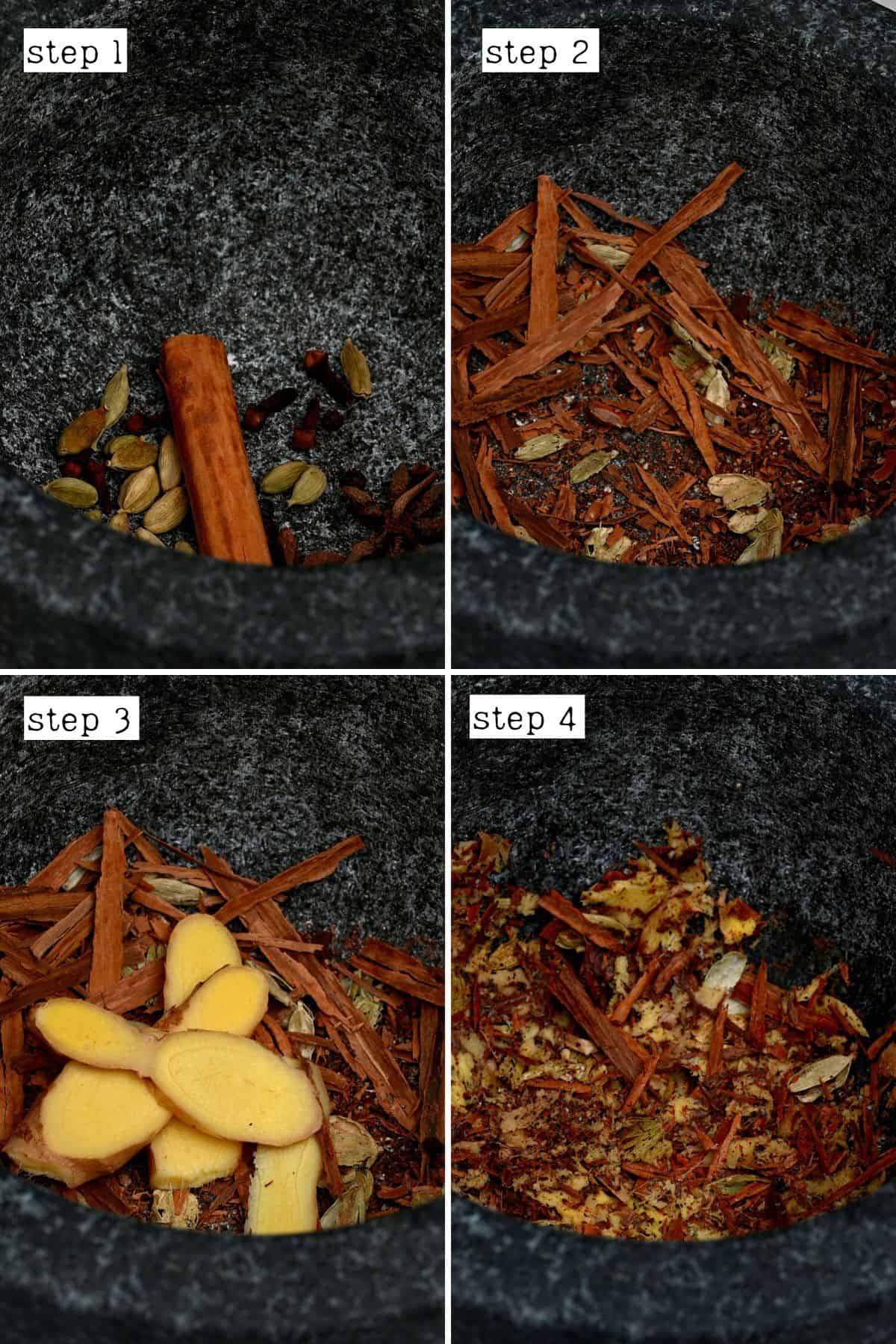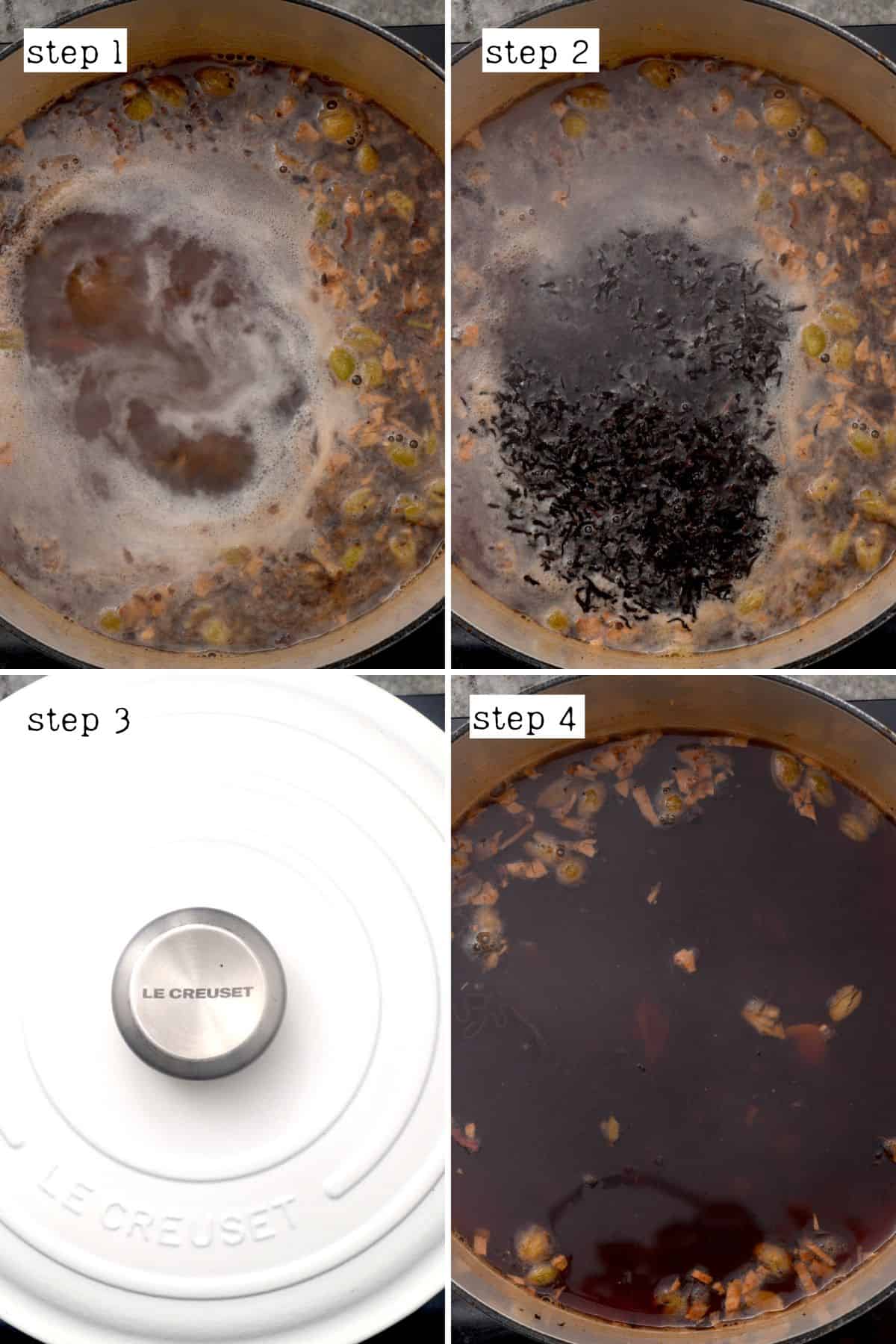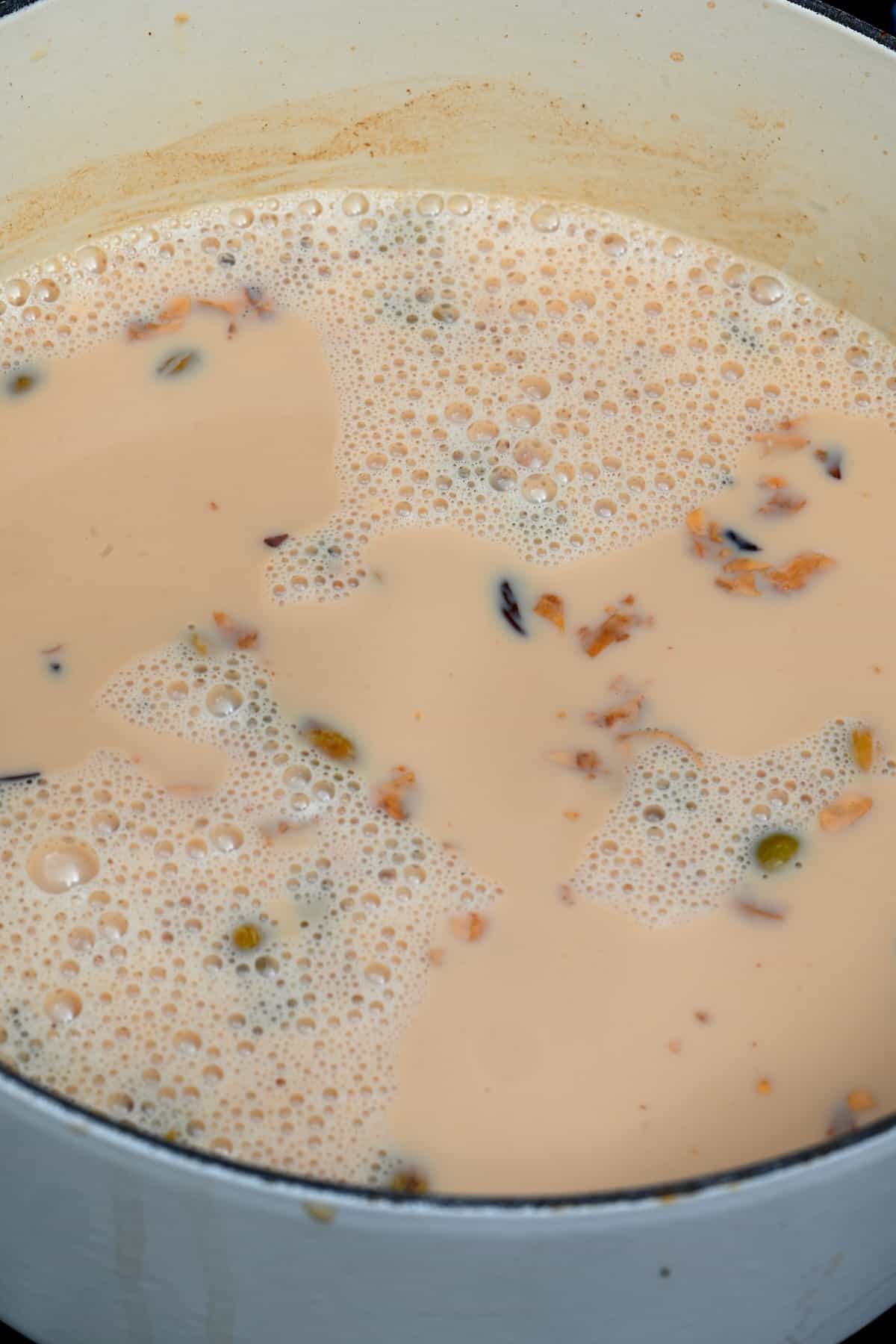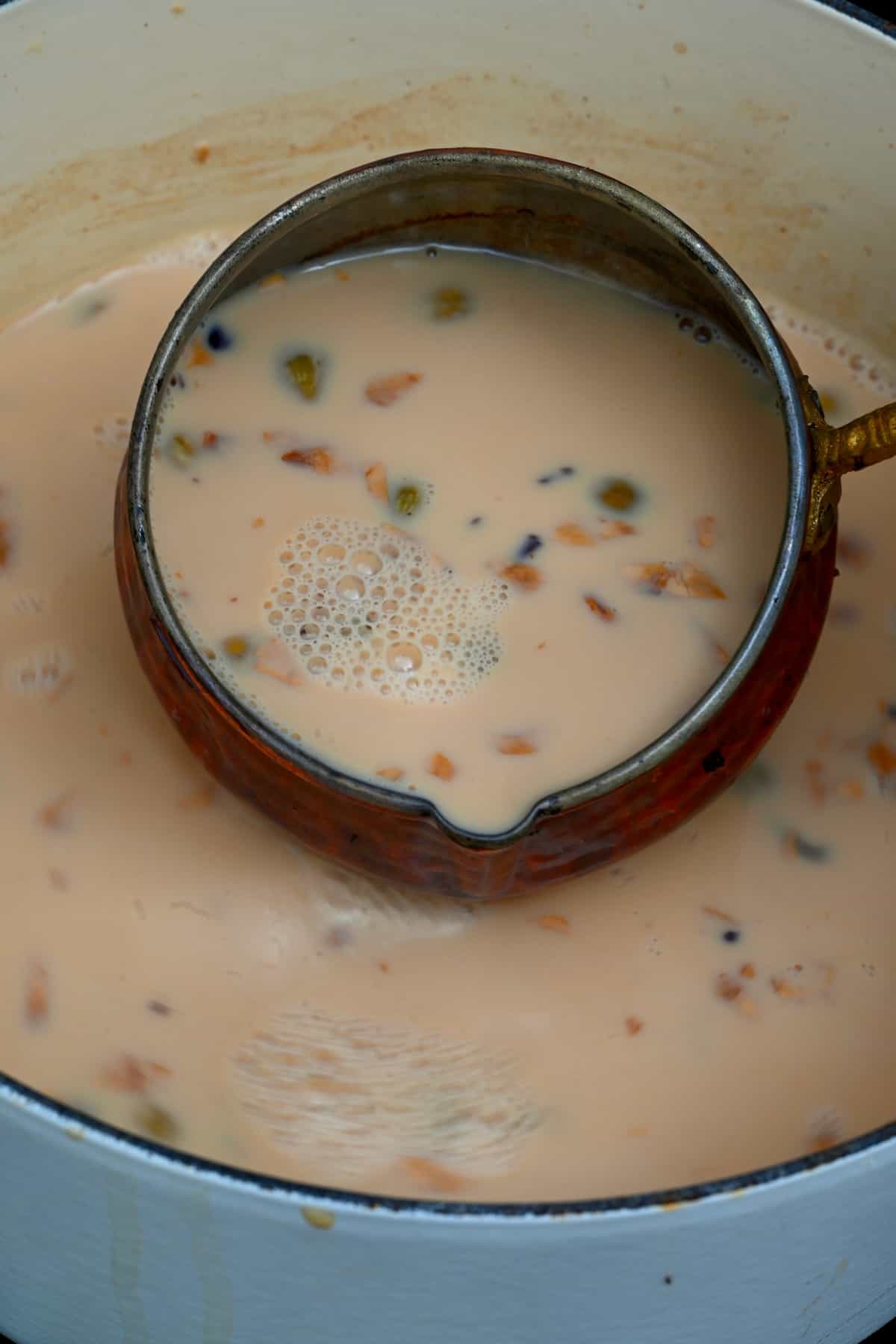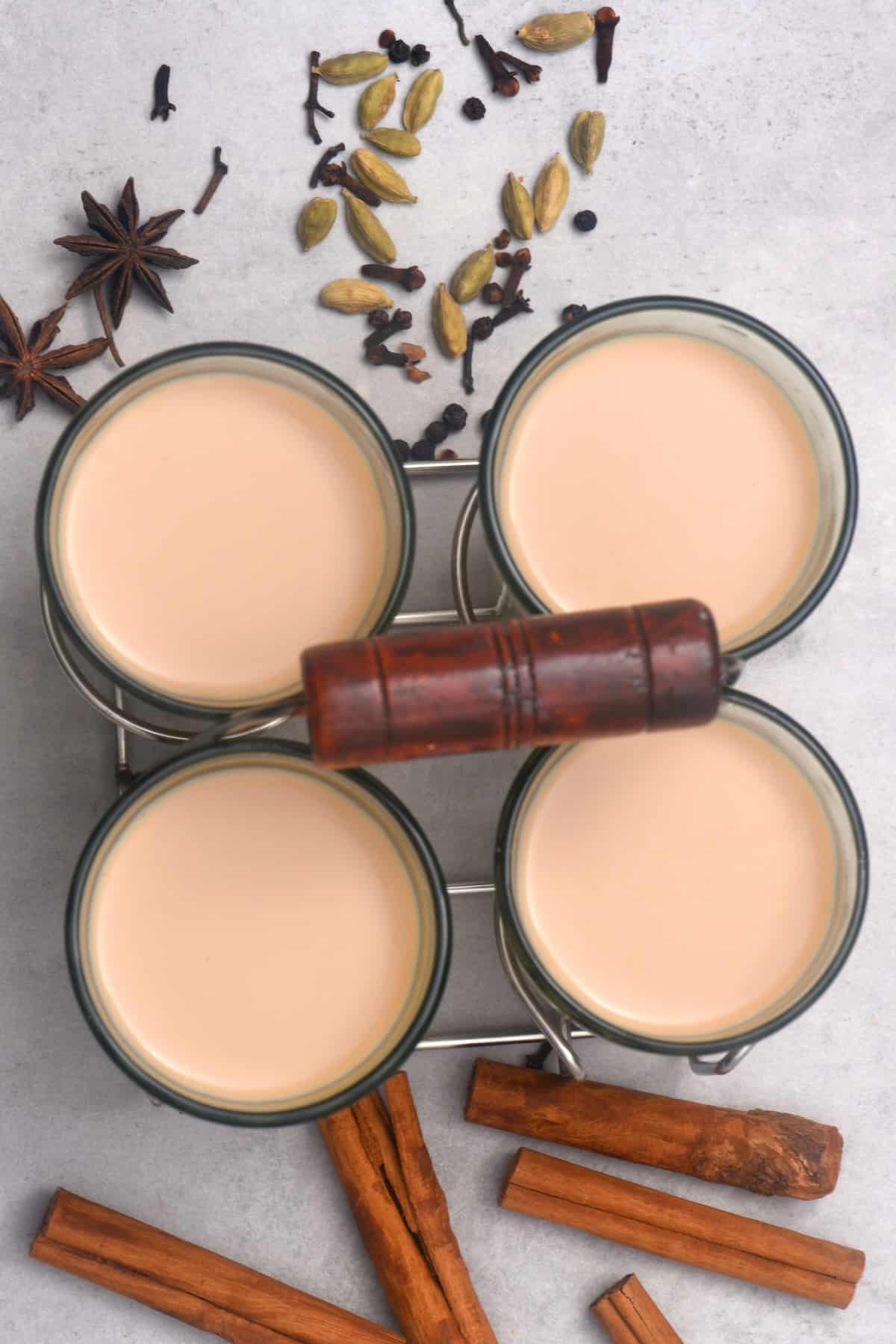Whenever I’m craving comfort, I love turning to warm, creamy drinks like a turmeric latte, matcha latte, British tea, or this Indian masala chai recipe. In fact, with winter approaching, this masala tea recipe has quickly become my favorite. Thanks to its blend of warming, fragrant spices, and whole milk (vegan adaptable), it has the perfect creamy consistency and spicy-sweet, full-bodied flavor! Best of all, this authentic Indian chai recipe is super simple to prepare at home. And it tastes much better than Western coffee-shop versions (aka a chai latte/chai tea latte), with a more robust flavor!
What Is Masala Chai
Masala chai is India’s most popular drink. It combines “masala,” meaning a blend of spices (called “karha”), with “chai,” meaning tea (in this case, a robust black tea). It’s a simple, warming, aromatic milk tea beverage. As with most “traditional” recipes (like garam masala), the spice blend varies between vendors and families. Though they often contain several similar warming spices, like cinnamon, clove, cardamom, ginger, and sometimes black peppercorns as a base. The method varies too (i.e., the order in which ingredients are heated, time spent boiling, double boil method, aerating the tea, etc.). However, after plenty of recipe testing, I’m sharing my favorite method. This version uses a combination of water, black tea leaves, milk, sugar, and a selection of traditional spices/aromatics. The result is a rich, creamy, smooth, full-bodied, silky mouthfeel masala Indian tea! In the States and the UK, we often call the drink “chai tea” or “chai tea latte,” which is basically like calling it “tea tea.” This has become the “norm” – hence why you may notice me refer to this as masala chai tea several times in this post.
Masala Chai Vs Chai – What’s the Difference?
Chai simply means “tea” in this and several other dialects – like Arabic, Czech, Bulgarian, Georgian, Greek (spelled “tsai”), Persian, Russian, Swahili, Turkey (spelled cay). In comparison, masala chai refers to this specific Indian spiced tea (often called chai latte or chai tea latte in coffee shops in the West). It’s creamy, sweet, warming, and aromatic, and may have a slightly peppery finish depending on the blend and ratio of spices used.
What Is Masala Chai Tea Good for
Thanks to the spices used within this Indian chai, there are several health benefits associated with drinking chai tea, and not just keeping you warm on chilly days. This spicy chai recipe positively impacts heart health, cholesterol levels, blood sugar levels, and gut health (with anti-nausea, thanks to ginger). The blend also contains anti-inflammatory and antibacterial properties, etc. Meanwhile, the small amount of caffeine (unless you use decaf tea) also boosts energy and metabolism.
What is Masala Chai Made of
This spiced tea with milk relies on 5 simple elements:
Black tea, Water, Sugar, Whole milk, Masala chai spices.
What Tea to Use for Masala Chai
It’s best to use CTC tea granules or a strong black loose-leaf tea (regular or decaffeinated). Like Assam, Darjeeling tea, or Nilgiri Indian tea, which will hold up well to the strong spices in this spiced chai tea. However, you could use Darjeeling or English Breakfast tea in a pinch, and there are versions using Rooibos tea or green tea.
What Spices Are in Masala Chai
Masala chai ingredients are simple, but the chai tea spices vary, with each vendor and family seemingly having their own blend and ratio. For this best chai recipe, though, I’ve used a fairly typical/classic chai spices combination of:
Cinnamon stick (or ground). Ceylon is best, not cassia. Cloves. Green cardamom pods. Fresh ginger (or ground, in a pinch). Star anise (optional if you like the licorice/ anise flavor). Black peppercorns (optional for extra heat/spice).
What Type of Milk to Use in Masala Chai
I recommend whole milk or 2% milk. It’s traditionally water buffalo milk. Use creamy dairy-free milk for vegan masala chai, like barista-style oat milk or canned coconut milk. For a super creamy version, use some evaporated milk, but avoid milk powder.
How to Make Masala Chai
First, slice the ginger (no need to peel it first). Use a mortar and pestle to gently crush all the whole spices together with the ginger, ensuring the cardamom pods are slightly open. Then, bring the spice mixture and water to a boil over medium-high heat in a saucepan. Leave them to simmer for 10 minutes, stirring often. Switch off the heat and add the tea leaves (or tea bags), then cover the pan and leave it to steep for 5 minutes. If the color/flavor of the Indian chai isn’t strong enough for you, add more tea. It’s best to do this rather than steep the tea for longer, as it can become bitter. Add the milk and sugar (to taste), then bring the masala tea to a simmer once more, constantly stirring/moving it about to aerate the tea. If you’re serving the masala chai tea recipe to many people, feel free to leave the sugar out so they can individually sweeten their portion. Finally, strain the spices out of the tea through a strainer (pressing on the spices to extract maximum flavor), and enjoy!
How to Aerate Your Chai
Aerating tea (also called “pulling” the chai) is a popular step used by chai wallahs (Indian tea-sellers) to add oxygen to the masala tea. It is important for achieving the best flavor and texture, adding body, creaminess, and silky mouthfeel, and even enhancing the flavor. You can aerate chai at two points in the recipe. First, after adding the milk to the saucepan, stir and move it around constantly to start building up a gentle foam and aeration. You can also “pull” the chai before serving it, scooping some up into a ladle. Then pour it back into the pot from a slight height (but not too high, or it’ll splatter everywhere), repeating this until foamy. Alternatively, use a small milk frother for a similar effect and extra foaminess.
How to Serve Masala Chai
When serving, pour the tea from a high distance, allowing it to aerate further as it’s poured into cups. Masala chai tea pairs particularly well with rusk, cake, and biscuits.
Masala Chai Mistakes That You Should Avoid
Reduce the milk ratio too much: if you don’t use enough milk, you aren’t able to properly aerate the chai. Use a 2:1 ratio minimum, but 1:1 will work best. Adding the milk at the wrong time: If you add the milk before the tea, you’re far more likely to scald the milk. More so, don’t just add milk to any spiced tea. Instead, ensure it simmers with all the ingredients on the stovetop for a proper masala chai. Boiling the tea: The bitter tannins within the tea are more likely to cause bitter tea when cooking the tea, especially with boiling water. Instead, allow it to steep off the heat for the smoothest, full-bodied flavor. Likewise, don’t steep the tea for too long, or it becomes bitter. Not aerating the spicy chai tea: This step is important for flavor, texture, and mouthfeel. Leaving the spices whole: Lightly crushing the spices will ensure their oils disperse into the chai sooner, for the best flavor. Not experimenting with the spice ratio: This base recipe works as a great starting point but can easily be adjusted to find your perfect flavor. Using ground spices: They often aren’t as fresh and can throw off the flavor ratio. They’ll also leave the chai gritty.
Can You Make Masala Chai Ahead and Store It
If you want to make a large batch of this chai masala recipe ahead for up to 5 days of chai masala, then I recommend leaving the milk out of the mixture. You can then heat the individual portions with the milk. If you want to store the fully assembled masala chai (with milk), then allow it to cool. Then store it in a covered jug/container for 4 days in the refrigerator. Note that the flavor intensifies on day two.
Can You Reheat Masala Chai?
I like to gently reheat the spiced chai tea on the stovetop over low heat. You could likely also use a microwave in 30-second increments, stirring in between.
More Tea Recipes
Pineapple skin tea (anti-inflammatory) Hibiscus Tea Homemade Green Tea Ginger Tea Fresh Mint Tea Cinnamon Tea Chamomile Tea Turmeric Tea
If you try this recipe for spiced tea made with milk, let me know how it goes in the comments below. I’d appreciate a recipe card rating and would love to see your recipe recreations – tag me on Instagram @Alphafoodie!
